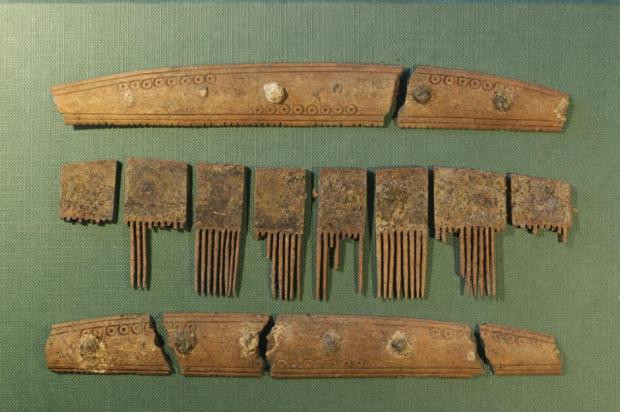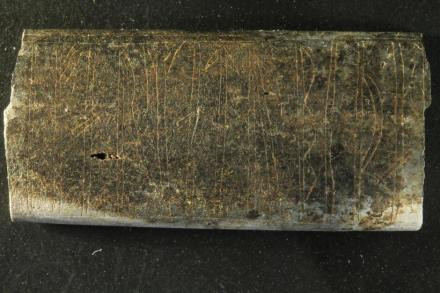Ancient objects with rare Viking rune inscriptions discovered in Denmark
Runic inscriptions shed light on a key period of the early Viking age.

Archaeologists in Denmark have uncovered two objects with rare Viking runic inscriptions dating to around 800 CE, during excavations in Ribe – the country's oldest town.
The new discoveries shed light on a key period of the early Viking age, according to Søren Sindbæk from Aarhus University, who led the expedition.
"These finds may help us in solving a famous enigma: why did people in a northern corner of Europe, often believed to be brutes and barbarians, invent and use their own alphabet?" Sindbæk told IBTimes UK.
Runes, which were used to write various Germanic languages, were first invented during the Roman period – the earliest known inscriptions date to around 150 CE. They had almost fallen out of use when suddenly, around CE 800, the Vikings created a new runic alphabet and started to write with it, according to Sindbæk.
Only a handful of runic inscriptions from this crucial period have been discovered to date.
"We know of many hundred texts written in runic from the time when this script was well established, in the centuries CE 900-1300s," he said. "But for some reason only precious few are preserved from the crucial time when the runes were reinvented around CE 800. Our two new finds add to a corpus of only about a dozen, most of which have been known for a very long time. This is quite a leap for our understanding the writing of the Vikings."
Sindbæk found a comb and small plate of bone or antler, both displaying runic inscriptions, in a marketplace in Ribe – once a powerful Viking settlement.

The inscriptions are difficult - though not impossible to decipher - because the texts are missing certain features marking the beginning and end of each word due to degradation.
"The new finds will help us in understanding the ways in which the Vikings used runes, and why they reinvented the art of writing," Sindbæk said. "Was it developed as a tool for magic? For labelling property and other business in trading towns? Or for sending messages over long distances? This is hard to know if you only have a handful of inscriptions to go by, so even two more inscriptions makes a lot of difference."
The way the runes were used on the comb was unexpected for the time, he added, suggesting that the early use of Viking runes may have been much more varied and widespread than previously thought.
"These are the runes we've been missing. We've waited generations to be able to dig into this," Sindbæk told Science Nordic.




















